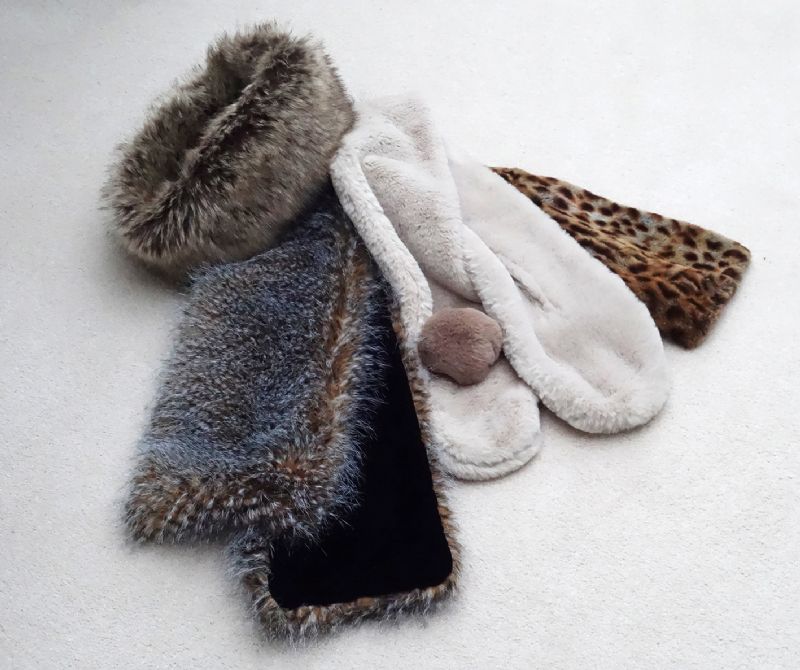- Home
- News, Articles & Reviews
- All Health & Beauty
- Looking Good, Feeling Great
- Medical Health
- Mirror Mirror on the Wall
- Style & Fashion
- General
- Vintage & Sustainable Fashion
We are hiring! Please click here to join our growing magazine delivery team in Gloucestershire!
Areas
Health & Beauty
Archive

The fur dilemma
All Areas > Health & Beauty > Vintage & Sustainable Fashion
Author: Lynda Rowland, Posted: Wednesday, 27th November 2019, 09:00
As winter approaches, more and more fashion companies are refusing to use real fur due to animal rights concerns. Even Her Majesty has recently announced that she will no longer authorise the use of real fur in any new clothing, although she will continue to wear her vintage pieces on private occasions.
It is no longer considered the height of glamour to wrap oneself in the skin of a dead animal – and rightly so. I was recently at the ballet at Cheltenham Everyman Theatre, and my sister-in-law and I decided to respect the occasion and dress up in an understated way. We felt we had struck just the right note of 21st century ‘smart casual’ occasion-wear.
Sitting in the same row was a very elegant lady in her eighties at the very least, in full evening dress and statement coiffure. What immediately caught the attention though, was her obviously very real mink jacket – something you rarely see nowadays, however glamorous it may look.
Faux fur is much more acceptable from an animal welfare point of view, but fake fur garments are almost invariably made from synthetic fibres, which are not biodegradable and the production of which contributes heavily to greenhouse gas emissions.
The International Fur Federation claims that real fur is sustainable and is a natural, biodegradable product that is increasingly produced in ethically managed conditions, which are soon to be regulated by a global certification programme.
Of course, this does not convince animal rights campaigners, who feel that animal skin should only be worn by the creature who was born in it, and that the fur industry also causes air and water pollution during its garment manufacturing processes.
Obviously real fur has to be treated somehow or it would eventually start to break down and degrade, and if the lifetime of the garment was to be significantly shortened, the fur industry’s claim that the garments are longer lasting than their fake counterparts would not stand up.
Meanwhile faux fur garments, especially at the cheaper throwaway end of the market, are so mass-produced that they contribute enormously to landfill.
So, there is an argument that real fur has less of an impact and is better for human health than fake fur, but the use of natural dyes and fewer chemicals is gradually being introduced into the faux fur industry, as it is in the wider fashion world.
The debate will go on, and perhaps it is up to us as individuals to decide what is more important to us – the effect of faux fur on the environment or the harm done to animals by the real fur industry. Until these issues are addressed to the customers’ satisfaction, the dilemma will almost certainly remain.
However, there are other ways of keeping warm in winter so, until we are sure how we feel about fur and its various detrimental effects, maybe we should leave it in its natural habitat – the animal world!Other Images
Copyright © 2025 The Local Answer Limited.
Unauthorized use and/or duplication of this material without express and written permission from this site's author and/or owner is strictly prohibited. Excerpts and links may be used, provided that full and clear credit is given to The Local Answer Limited and thelocalanswer.co.uk with appropriate and specific direction to the original content.More articles you may be interested in...


© 2025 The Local Answer Limited - Registered in England and Wales - Company No. 06929408
Unit H, Churchill Industrial Estate, Churchill Road, Leckhampton, Cheltenham, GL53 7EG - VAT Registration No. 975613000You are leaving the TLA website...
You are now leaving the TLA website and are going to a website that is not operated by us. The Local Answer are not responsible for the content or availability of linked sites, and cannot accept liability if the linked site has been compromised and contains unsuitable images or other content. If you wish to proceed, please click the "Continue" button below:




